Intro
Contents
Introduction
When I hesitantly (due to the $500/1.5m price tag) reviewed the SOtM dCBL-CAT7 ethernet cable back in March, I realized the importance of having a high-quality ethernet cable in the chain. Now I have a dCBL-CAT7 running from my modem to my router and two more for my actual source components. I felt the performance justified the price as the sonic improvements were even greater than some high-end interconnects and power cables I’ve tried.
As with all components, the SOtM dCBL-CAT7 isn’t perfect. Aside from its physical unwieldiness, the midrange is slightly recessed and it’s an overall leaner sounding cable. Though possible, it’s atypical for one to tune a system by daisy-chaining multiple interconnects or speaker cables. With an analog signal, this may result in something sonically confusing or veiled.
So what can we do in the digital domain? This is where the SOtM iSO-CAT6 isolator comes in. May Park from SOtM mentioned better sound quality could be obtained by using the iSO-CAT6 isolator in-between two audiophile-grade ethernet cables. The SOtM iSO-CAT6 isolator is a passive and directional device which assists in the taming of EMI/RFI noise that propagates along the cable, even with cables of very short lengths.
The SOtM iSO-CAT6 Special Edition comes with three cables (gray, dark gray, and black) to enable the listener to tune to her liking. The iSO-CAT6 also comes with a generic short cable. I personally would avoid this cable as it sometimes deteriorates the overall sound quality of the cable before it. In other words, if you’re going to use this generic cable, you may as well forego the iSO-CAT6 and stick to a single ethernet cable.
In addition to filtering, the side-benefit of the SOtM iSO-CAT6 grants us the ability to tune our systems in the digital domain. The question is: Does it come at a cost sonically when tuned this way?
Performance
In order for the SOtM iSO-CAT6 to shine, you’ll need quality cables on both ends. At a minimum, I would suggest the Supra CAT8 or the SOtM SE black cable. When using the same quality ethernet cables on both ends, the iSO-CAT6 unequivocally provides many SQ improvements:
- Tightens up and rounds out the sound. Without the iSO-CAT6, instruments and voices sound a bit flatter and less delineated.
- More vivid, dynamic, and airy. The music just breathes and opens up more freely into space.
- Enlarges the soundstage a significant amount. Without the iSO-CAT6, the music (surprisingly) sounded more congested and less extended, even with the dCBL-CAT7 cable.
- Tone and timbre improve and maintain their integrity.
- Better resolution of micro-details and dynamics, articulation, and overall realism. The stroke of a bow, the pluck of a guitar, and the attack of a kick drum are made more apparent.
- Imaging, separation, and layering improve substantially.
With quality or identical ethernet cables on both ends, the iSO-CAT6 enhances the qualities of that cable. You’ll get a better sense of grip, definition, and coherence while being bathed in an enormous soundstage. It’s very clean with no artifacts or fuzziness around the edges. You’ll get more of that “the speakers disappear” effect. The only drawback with certain combinations is a leaner sound with a slightly recessed midrange (which could be remedied with other cables/components).
Seasoning Your Sound
At this point, I’ve decided that in order to achieve the highest fidelity, the iSO-CAT6 will have to be an integral part of the audio chain. I thoroughly enjoy the flexibility of tuning with the iSO-CAT6 as you could essentially “blend” the best of two cables. As always, YMMV as the effects of a cable is system dependent. From my experience, even changing out a single power cable could alter the sound completely. However, I feel the relative differences between cables remain true, just perhaps not at the same magnitude. For that reason, I’ve tested these cables across many systems for a more holistic assessment. This included multiple speakers, headphones, routers/modems, the Lumin S1, SOtM sMS-200, and Sonore microRendu.
Quick Tip: The connector on the iSO-CAT6 will easily break the locking tab on the dCBL-CAT7 and perhaps other cables. Just make sure you depress fully before detaching from the iSO-CAT6.
For reference:
- I prefer a sound with a tilt towards the warmer side of neutral.
- Timbre is non-negotiable for me. Voices and instruments have to sound natural and palpable.
- 35-year-old ears with zero listening impairments.

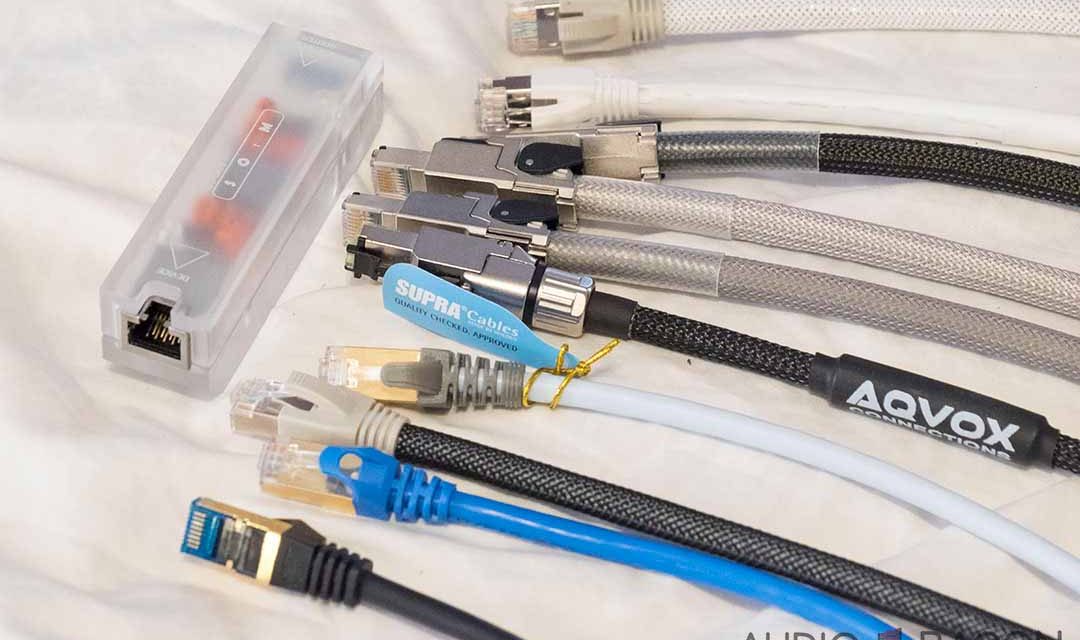
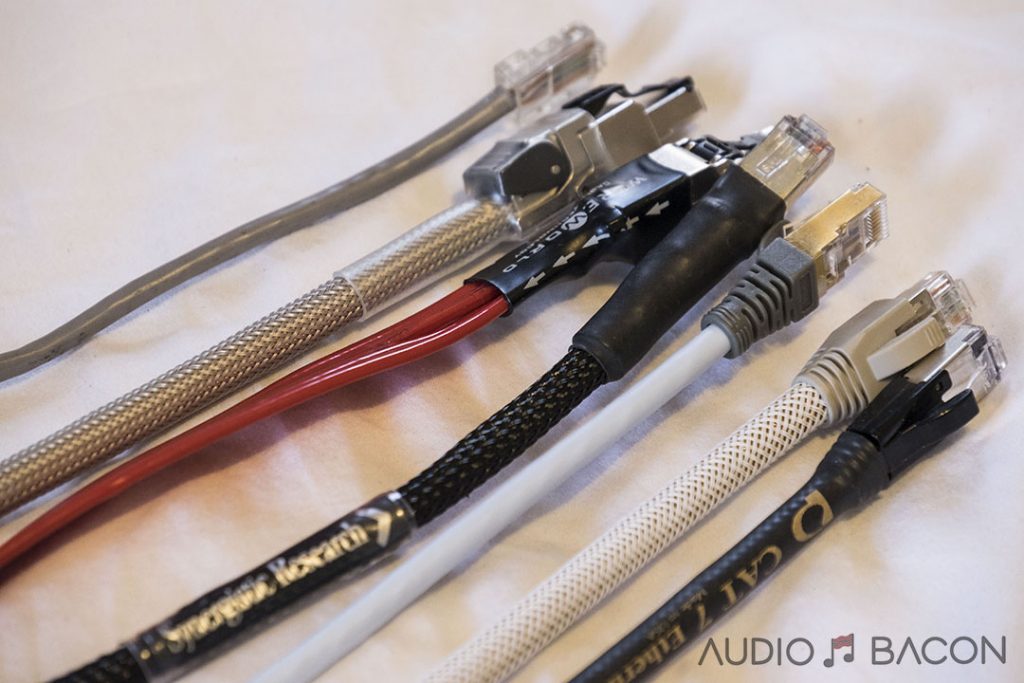

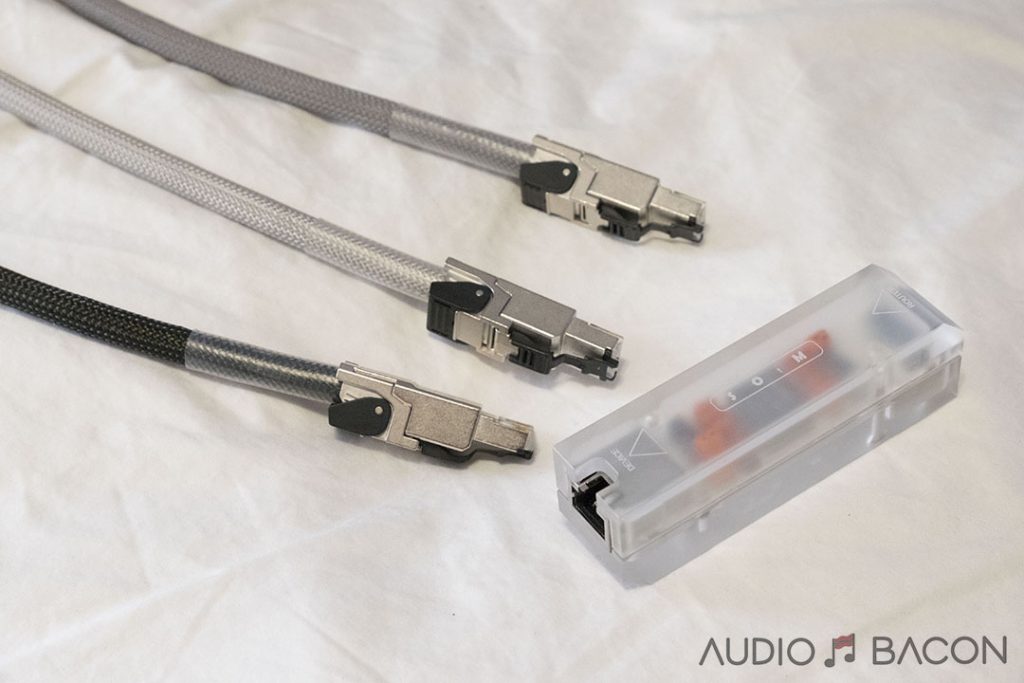
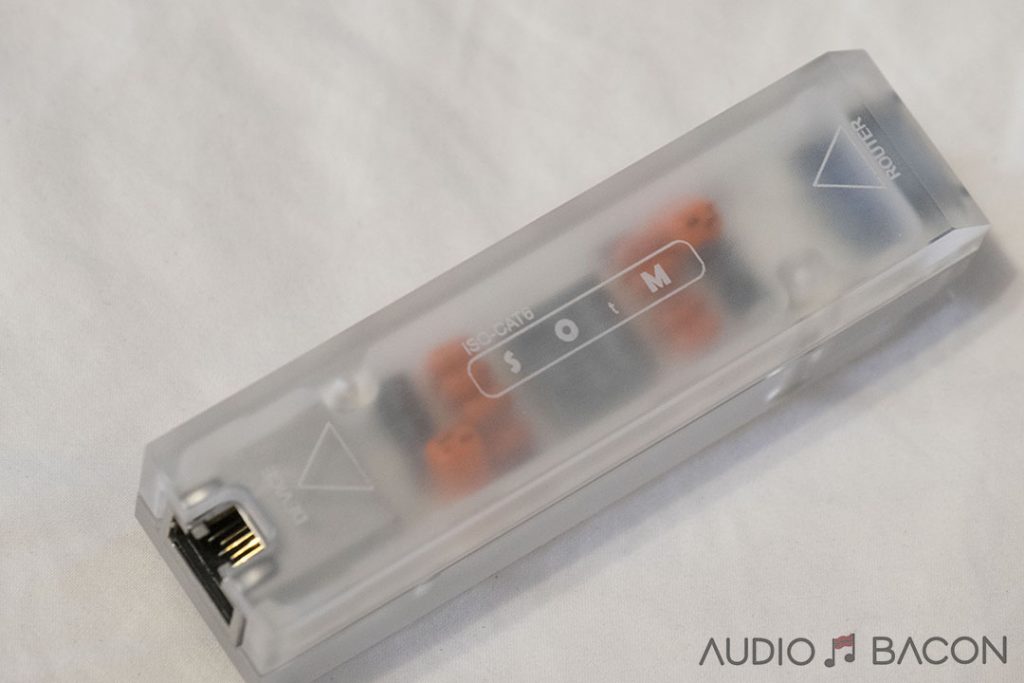


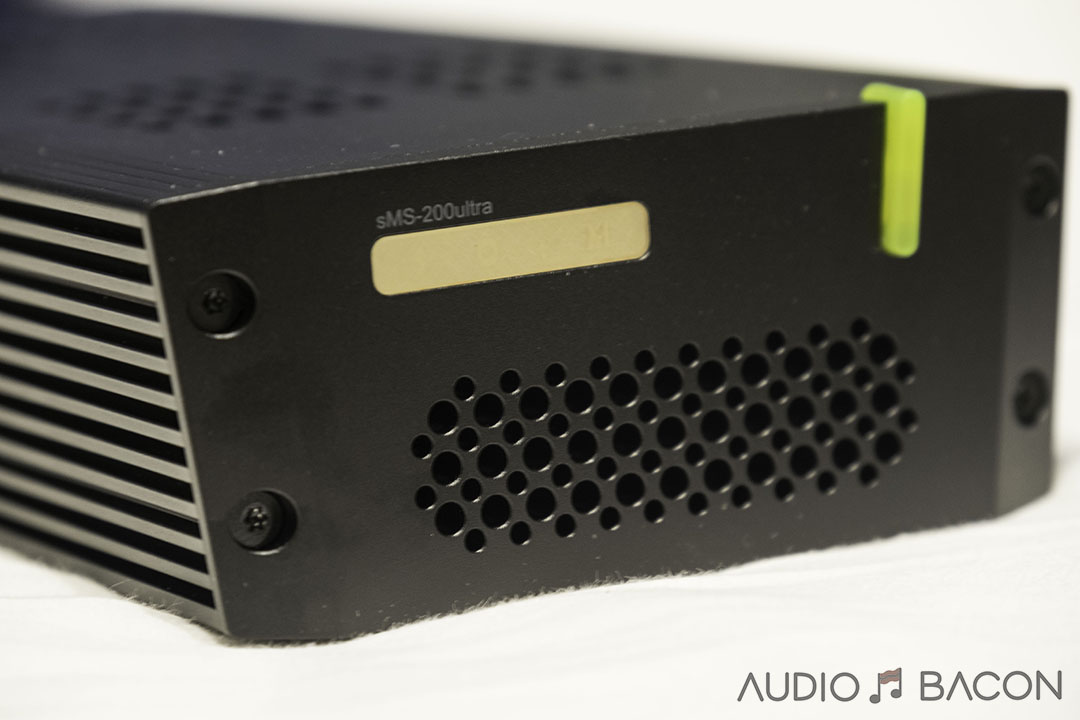

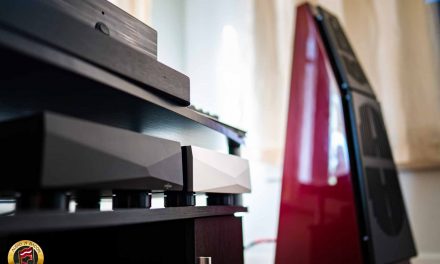


Hey there Jay,
Is this just a galvanic isolator for the ethernet connection?
Or does it also combat current peaks on the single signal lines as well?
Cheers
I am asking this because most of the ethernet isolators I know of can not combat transient current peaks of the single signal wires…
Cheers
From my understanding, it only provides galvanic isolation and does not combat transient current peaks. I’ll verify with SOtM.
👍
Wonder how is compares against say the Acoustic Revive Lan Isolator?
I’m open to doing the comparison if someone’s willing to send it in 🙂
I did some testing with a Cary Audio DMS-500, ASRock N315M based system with Intel 2 port GBe Server PCIe, Cisco SG 200-8 L3 Managed Switch, 3 foot Nordost Heimdall 2 ($700) CAT8, WireWorld Starlight 12 foot CAT8 ($350) and a 315 foot HyperTek CAT5e that I terminated off the spool.
Captured all this into an RME FireFace UFX.
Made the tracks available for download, anonymized, and no one could tell when the 315 Generic cable was in use or the $233 foot cable.
For those that didn’t even accept that as proof, I’ve offered to come onsite for bias controlled evaluation in their own setup, room, material. Using the SG 200-8 in LAG would allow for swapping out cable in real time.
I would bring $2000 if you could hit 18 / 20 random change. If you can’t you pay my travel expenses.
Are you suggesting there are no sonic differences between all ethernet cables or only between the ones you’ve evaluated? If you’re saying all and you’re willing to bet $2k on it…you’re obviously a neophyte who hasn’t had much experience.
Care to post the download links for the tracks?
I’ve done:
WW SL 3 meter
Nordost Heimdall 2 1 meter
AQ Vodka 1.5 meter
Generic 98 meter CAT5e.
All cables passed spec.
Song 1: https://www.amazon.com/clouddrive/share/Ni6eraH2KgAc7rIXC0Eh6wu1b7MPXY7Z18UMfai5us2?ref_=cd_ph_share_link_copy
Song 2: https://www.amazon.com/clouddrive/share/bD0Z87vfscWzA3PhyE42JuVGagNXmvcKTxqWhQpLIKO?_encoding=UTF8&mgh=1&ref_=cd_ph_share_link_copy
These above tracks were with the 98 meter generic and the 3 meter Starlight. Cables were swapped out during playback with no break in play.
So no, I don’t see cables improving any playback were a competent cable is already in play based on my experience. And I don’t believe you can either once your sighted biases are controlled for.
My offer stands btw. I choose the WireWorld. I’ll make a CAT5e right in front of you and make it 10X the length of your WW.
You won’t know what is in situ. I provide the Server/Client/Cisco SG200-8. Your provide everything from the USB cable on back.
JRiver Media player (bit streamed). You provide the tracks.
You used weak methodology with your weak-ass ADC and your low-res system and even lower-res ears. Digital is just 1s and 0s…yeah, right.
Offer still stands. Lets see your ears and high res system vs my weak ass adc and low-res system.
I have $2000 here for you if you pay my travel expenses and can’t hit 18 or 20 using your system from the USB cable back and using your own tracks.
Let me know if you need any other information about the setup or method.
Actually digital is just 1s and 0s. Also they talk about cat 8… thats still being discussed as a standard. Its not available. And its about throughput. Not quality of signal. Too much noise introduced in cat xyz cable equals lost packets not harsher sound.
Cat 7 usually has better shielding, and thicker individual conductors. More resistant to external interference and higher theoretical speeds.
It’s $2000 for most likely an hour of your time. You are out nothing if you can hit 18 of 20. I’ll even pay for the air fare
It’s a slam dunk right?
Here is a YTV showing the proposed setup in operation.
https://www.youtube.com/watch?v=kOp3WtOeDnE
That is you get $2000 and I pay air fare if you hit 18/20. If you don’t you just pay my air fare. Funds to be escrow.
Mark, I’m going to save you the embarrassment (and money). Having done the networking for a few data centers and hospitals and crimping my own cables for over 15 years, I understand your perspective on adhering to spec. FWIW, I have a degree in electrical engineering and I know it technically shouldn’t make a difference. I’ve also discredited these silly audiophiles over the years. However, like your future self, I realized my assessments were perfunctory.
All these music streaming services (Tidal, Spotify, etc) use UDP, not RUDP/TCP so packets might not arrive in a sequential manner or at all. Unlike other applications, music needs to arrive in the proper order and the proper timing. Due to inconsistent clocks and RFI/EMI, the noise will have an effect on the signal and thus the bits that arrive at the DAC for processing. The human ear is hypersensitive to this noise. Consequently, different cable designs will have various levels of impact on the resultant sound.
The day you realize you’ve been wrong and take down all your Youtube videos, it’ll be a humbling experience. At that point, you hopefully wouldn’t dismiss the idea of vibration isolation 🙂
Ok. So fundamentally you incorrect on a few things:
1. Most streaming services use TCP and Not UDP. Any server that is done in the web browser is over HTTP and that is a TCP protocol through and through.
2. Roon just recently switched over to TCP BTW.
3. Ethernet networks are Non-Realtime systems cross many differing clock domain boundaries. These differing clock domains are handled by buffering.
4. When you start playback on a system and remove the cable and the music still plays are you maintaining that timing variance is still in the static buffer?
I’ll make a 2nd offer:
My $4000 to anyone $1000 that they can’t go through and hit 18 out of 20 flips of the coin.
If you can’t hit it then pay my travel expenses and $1000. If you can I pay my travel expenses and give you $4000 I’ll post a public Youtube video admitting I was wrong. Money held in escrow.
I’m trying to figure out what person is so steadfast in their ears that they wouldn’t take my $2000/$4000?
There’s nothing worse than a deaf troll. Crawl back in your hole already. You’re not worth anyone’s time.
I worked at T.I. as an applications engineer designing phy power supply topologies.
Something you need to understand is that for runs under 40 meters, with a cable that has adherence to TIA/ISO the PHY is going to be running in it’s lowest power state. S.I. isn’t substantially altered from one cable to another. Out of spec cables will affect this but we still manage to keep the Eye together.
Once a cable has passed spec for noise immunity, inter-pair crosstalk, skew, NeXT. There isn’t much else to do.
On well built systems with buffer (my Auralic had something like 7 seconds at 16/44.1) the sound you are hearing was delivered ages ago from the perspective of the OS. Further more different parts of the NIC are going to be turned off and on as needed.
Given all the other sub systems on the same PCB that a PHY is implemented on there are much more demands made by those other systems. CPU/APU, South Bridge, RAM etc…
> All these music streaming services (Tidal, Spotify, etc) use UDP, not RUDP/TCP
… still ethernet frames includes checksums? Given OK bandwidth and latency, the problems of layer 3 shouldn’t really be affected by ethernet cables, switches etc?
Boy you must be lonesome… I get it… Life sucks sometimes… But there are places more appropriate to search for help.
All the best, Gonna listen to stiff upper lip, now 😉
Do you use an audiophile switch with filters? I have a Waversa hub. It will make a huge difference.
I must chime in…
1) That’s one for mythbusters, clearly.
2) It would be good to post the full setup here. If the content source (eg, a nas) is on the same LAN as the receiver, there should be 0 packet loss, or so few that it is not perceptible, assuming you use half-decent switches. Any decent $5 ethernet cable will be sufficient here. And have a look at
http://www.siemon.com/us/white_papers/97-10-02-presentation.asp
for example. In a small LAN, you really have to start doing a lot of things wrongly to start having packet loss/alteration (a cable cannot retime packets by the way, no, it cannot change their order of arrival… come on).
3) I do assume we are not talking about content from internet here, otherwise one needs to explain me how optimizing 5 meters in a (tens of) thousands of kilometers chain that includes using meters and (kilo)meters of cheap cat 6 cable can make an audibly perceptible difference.
4) There is a point to be made for the readers, though: with ultra-cheap cables and switches, you may have a faulty system that drops lots of data. You don’t usually see that with even $5 cables and $50 switches, but I have had faulty (as in, you realize immediately) $1 ethernet cables. But essentially, it works or it doesn’t, i.e., there’s electrical connection or there’s not. It’s bits which are transmitted after all.
5) There is also another point to be made for the readers: whether the above “study” is an elaborate prank or an honest perception by the reviewer (and if so, probably then an interesting psychological effect to study), before spending more than $10 on a rj45 cable make sure it is the weak link of your system first. This is not speaker cable we are talking here: a bit is a bit, it’s not analog direct-to-the-speaker wire, and therefore a link very robust to electromagnetic noise.
And I must add, to convince yourself that rj45 cables are not posing any problem, make actual computer network diagnosis, to see how many errors you get on your setup. I use iperf:
http://www.techrepublic.com/blog/linux-and-open-source/iperf-a-simple-but-powerful-tool-for-troubleshooting-networks/
You’ll get essentially 0, showing that changing a cable cannot change the auditory perception: if no bit is altered during the transmission, then no change is made to what is fed to the DAC… Note again, for WAN/internet it’s a different story, yes UDP packets may be lost, especially via wireless, but it’s nothing your own installation can control anyway.
Good luck,
Quick question:
What actually causes the supposed difference in sound between network cables? I’ve yet to meet a professional sound engineer who cared what kind of cat 5 or cat 6 they had in their chain, even when using it for layer 1 or analog signal transfer (yes we’ll send analog over cat 6 sometimes). For the life of me I can’t provide a scenario in which it actually matters that a digital cable is beyond spec.
This is the biggest horseshit I’ve read in a long time. Give me 1 reason why there could be a sound difference between any half decent cat 5/6/7 cable and of the ones reviewed. And before you call me deaf, I’m a professional mix engineer with dozens of gold and platinum records, and my studio uses Dante for audio over IP. Beyond idiotic…
Get a cheap Supra USB cable and compare it to what you have. If you can’t hear a difference, consider yourself lucky 🙂
Btw, love your work. Especially the 2Pac stuff.
Thanks for this blog – it entertained me for a couple of hours. Especially the part of then black, grey and light grey cable that gives you different eq over a digitally encoded signal. You should definitely consider doing stand-up comedy for engineers.
Glad you were entertained. I was once in your school of thought…until I actually heard it for myself.
Jay,
In your current set-up that prefer has the black cable + iSO-CAT6 + dCBL-CAT7 connected to the router. Please review the signal direction as marked on all devices. If I follow the SOtM directions that come with the iSO-CAT6 SE the arrow on the dCBL-CAT7 filter is counter to the signal direction. Can you confirm this? In my system I have my NAS drive + Black cable + iSO-CAT6 filter + dCBL-CAT7 connected to my network player and the arrow on the dCBL-CAT7 filter is in the opposite direction of the digital signal flow. Is the correct?
Should be in the same direction as the arrow. In your case, arrow should be pointed away from the NAS drive. When reversed, I get a more cloudy and flat presentation.
An ethernet cable in the same price range of the Supra Cat8 and also quite popular on forums is the Chord C-Stream. Any chance of reviewing it? Thanks
Sometimes a doctor will prescribe a placebo pill (if the patient says it ok i hear now though..lol) to that person taking the placebo it is totally worth it.
Ethernet packet loss would cause more sound issues than cable. maybe a duplex issue between 2 devices could cause playback issues — as long as their is a jitter buffer acceptable to the thru-put should be fine though.
but just like that placebo pill effect one might look at a 500 dollar 1 meter cable and say that must make it sound better. it looks better for sure and if one has the money to spend on it that is awesome. just wait til that clip breaks on the patch cable and it half falls out all the time. 🙂
Any chance of reviewing the Streaming cables from Tellurium Q? I’d be very interested to hear what you think. I’m currently using a combination on Supra CAT8 and Meicord in my setup but would like to try a SOtM or TQ cable at some point.
One very interesting cable for test could be a Aim Shieldio NA7. Cause this cable use some material, in order to remove Electromagnetic Interference. And for me unlike audio cables, internet cables, must passively filter everything that is not digital information.
Jay, thanks for your great reviews. I have ordered a DCBL-CAT7 based on your review to place between switch and Streamer, but that is too expensive for the 30ft stretch between switch and router. Based on your testing, what cheaper cable would you recommend pairing with the SOTM cable for long streches? I have tried the Supra from switch to streamer and love the smoothness (my system is a touch bright) but I agree with you on downsides. Thanks
The Linear Solution Reference CAT7a: https://thelinearsolution.com/tlsref_eth.html – not as resolving or spacious as the SOtM CAT7 but very musical. This is the cable I use with the SOtM CAT7s.
Would it be possible to test this combination? Supra CAT8 -> iSO-CAT6 -> dCBL-CAT7 compared to Supra CAT8 -> iSO-CAT6 -> Supra CAT8
Hi Jay, Very interesting. A basic question; In recording mode (digital source 192kHz,24bit to computer through switch) is the corruption of the signal still an issue (no DAC involved) ? Is the ISO-CAT6 still a plus or are two CAT6 or CAT7 and a good switch fine for the job?
This is a brilliant, bizarre (and expensive) piece of performance art. It goes without saying that it has no bearing on reality whatsoever.